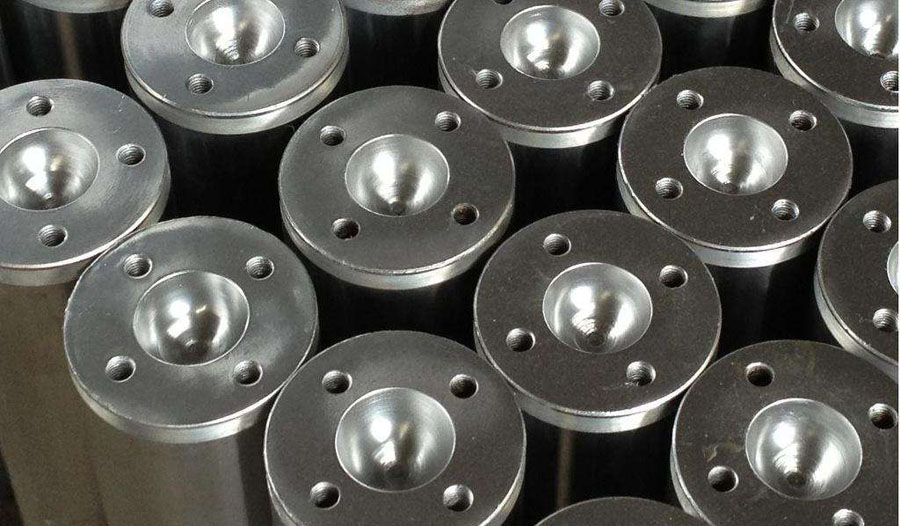Electroplating refers to a surface engineering technique in which a metal part is immersed in a salt solution containing the desired metal to be plated. Through the application of direct current, the metal part serves as the cathode, while the metal to be plated or another inert conductor acts as the anode. Through the process of electrolysis, a firmly bonded metal film is deposited onto the surface of the substrate.
Electroplating of metal parts offers several advantages, including enhancing the metal’s protective properties, protecting the parts from corrosion, improving their performance, and enhancing the appearance and surface quality of the metal.
Various types of metal plating can be achieved, such as chromium plating, zinc plating, gold plating, silver plating, nickel plating, and more, resulting in different surface colors like gold, silver, black, or gunmetal. Gold plating and hexavalent chromium plating (imitation gold) can produce a gold surface appearance, while nickel, chromium, and silver can achieve silver surface appearance. Black chromium plating and black zinc can create a black surface appearance, while gunmetal appearance can be obtained through alloy plating.
Why Is Cleaning Necessary Before Electroplating?
Before carrying out metal electroplating, it is essential to clean the metal surface thoroughly. This process is aimed at removing dust and loose impurities from the metal surface, as these impurities can hinder the contact between the electroplating solution and the metal surface, thereby affecting the quality of the electroplated layer. A clean metal surface promotes better adhesion and ensures that the electroplated layer adheres firmly, reducing the risk of peeling or flaking.
If contaminants such as dirt, grease, or oil are present on the metal surface and they enter the electroplating solution, it can lead to the contamination of the plating bath. This can negatively impact the lifespan of the electroplating solution and affect the overall quality of the plating process. Additionally, only a clean metal surface can achieve a smooth and uniform electroplating result. Any impurities present on the surface could cause color variations, ripples, or the formation of bubbles in the electroplated layer, leading to an undesirable final appearance.

Types And Applications Of Electroplating
Zinc Plating:
Zinc plating, a high-purity coating with an anodic nature, provides mechanical and electrochemical protection to steel and iron substrates. Widely used in machinery, hardware, electronics, instrumentation, and light industry, it is one of the most commonly applied plating methods.
Copper Plating:
Copper plating, a cathodic coating, offers only mechanical protection to the base metal. It is commonly used as a base or intermediate layer to improve the adhesion between the surface coating and the substrate in various applications, including electronic circuit boards and decorative metalwork.
Nickel Plating:
Nickel plating, a cathodic protective layer, provides only mechanical protection to the underlying metal. Apart from direct applications in medical devices and battery casings, nickel plating is usually utilized as a base or intermediate layer in industries such as daily hardware, light industry, household appliances, and machinery.
Chromium Plating:
Chromium plating, another cathodic coating, serves solely as a mechanical protective layer. It is extensively employed for decorative purposes, with a polished or electroplated bright layer as the base. Widely used in instruments, daily hardware, household appliances, aircraft and automobile parts, motorcycles, bicycles, etc. Functional chromium plating variants include hard chrome, porous chrome, black chrome, and milky white chrome.
Tin Plating:
Tin plating is cathodic for steel substrates and anodic for copper substrates. It is commonly used as a protective layer for thin sheet metal in the canning industry, where most tinplates are produced from tin-plated iron sheets. Tin plating is also widely used in the electronics and power industries.
Alloy Plating:
Alloy plating is a process in which two or more types of metal ions are co-deposited on the cathode, resulting in a uniform and fine-grained coating. Alloy plating offers superior properties such as crystalline density, coating porosity, appearance, hardness, corrosion resistance, wear resistance, magnetic properties, abrasion resistance, and high-temperature resistance, compared to single-metal plating. With over 240 types of electroplated alloys, around 40 are commonly used in practical applications. The three main categories of alloy plating are protective, decorative, and functional, widely used in industries such as aviation, aerospace, navigation, automotive, mining, military, instrumentation, daily hardware, cutlery, musical instruments, etc.
In addition to the aforementioned plating methods, other techniques include chemical plating, composite plating, non-metal plating, gold plating, silver plating, and more.
In conclusion, electroplating plays a vital role in the machining industry by improving the performance, appearance, and durability of machined parts. The versatility and customizability of electroplating processes make it an indispensable surface finishing technique, catering to a wide range of industries and applications. By selecting appropriate plating materials and adhering to environmental guidelines, manufacturers can harness the benefits of electroplating to produce high-quality and functional machined parts that meet the demands of modern engineering and consumer requirements.



